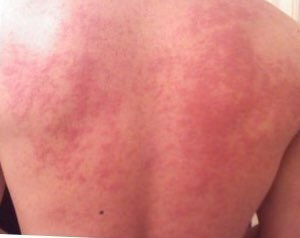Allergies

Hypersensitivities happen when your insusceptible framework responds to a remote substance —, for example, dust, honey bee venom or pet dander — or a sustenance that doesn't cause a response in the vast majority.
Your safe framework produces substances known as antibodies. When you have hypersensitivities, your resistant framework makes antibodies that distinguish a specific allergen as destructive, despite the fact that it isn't. When you come into contact with the allergen, your insusceptible framework's response can arouse your skin, sinuses, aviation routes or stomach related framework.
The seriousness of sensitivities shifts from individual to individual and can go from minor bothering to hypersensitivity — a possibly hazardous crisis. While most sensitivities can't be restored, medicines can help diminish your hypersensitivity side effects.
causes :
A hypersensitivity begins when your safe framework confuses a regularly innocuous substance with a risky trespasser. The invulnerable framework at that point produces antibodies that stay on the alarm for that specific allergen. When you're presented to the allergen once more, these antibodies can discharge various safe framework synthetic compounds, for example, histamine, that reason hypersensitivity side effects.
Regular sensitivity triggers include:
Airborne allergens, for example, dust, creature dander, dust bugs and form
Certain sustenances, especially peanuts, tree nuts, wheat, soy, fish, shellfish, eggs and milk
Creepy crawly stings, for example, from a honey bee or wasp
Prescriptions, especially penicillin or penicillin-based anti-infection agents
Latex or different substances you contact, which can cause unfavorably susceptible skin responses
Symptoms :
Sensitivity indications, which rely upon the substance included, can influence your aviation routes, sinuses and nasal sections, skin, and stomach related framework. Unfavorably susceptible responses can extend from mellow to extreme. In some extreme cases, hypersensitivities can trigger a dangerous response known as hypersensitivity.
Feed fever, likewise called unfavorably susceptible rhinitis, can cause:
Wheezing
Tingling of the nose, eyes or top of the mouth
Runny, stuffy nose
Watery, red or swollen eyes (conjunctivitis)
A sustenance hypersensitivity can cause:
Shivering in the mouth
Swelling of the lips, tongue, face or throat
Hives
Hypersensitivity
A creepy crawly sting hypersensitivity can cause:
An enormous territory of swelling (edema) at the sting site
Tingling or hives everywhere throughout the body
Hack, chest snugness, wheezing or shortness of breath
Hypersensitivity
A medication sensitivity can cause:
Hives
Irritated skin
Rash
Facial swelling
Wheezing
Hypersensitivity
Atopic dermatitis, an unfavorably susceptible skin condition additionally called skin inflammation, can make skin:
Tingle
Blush
Piece or strip
Post a Comment